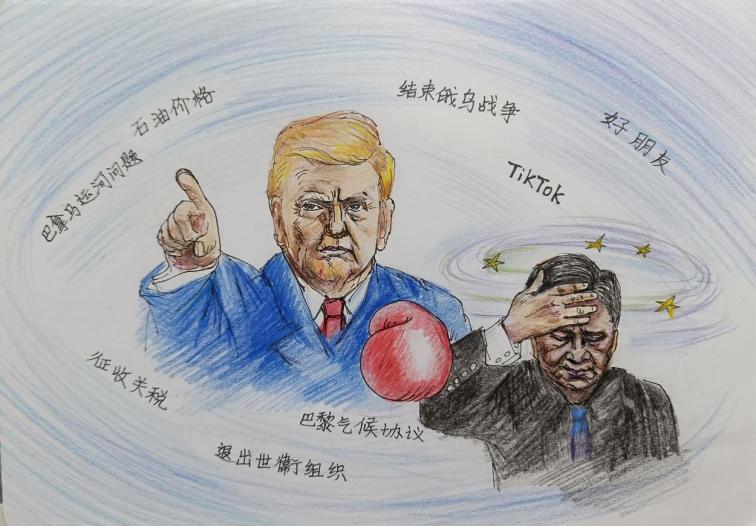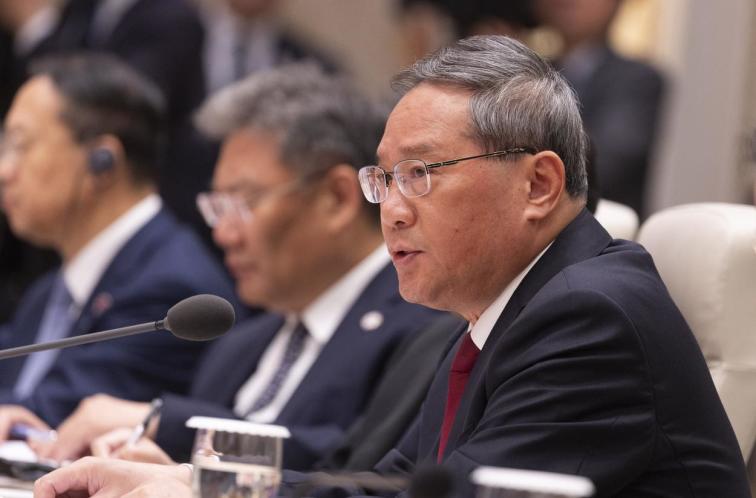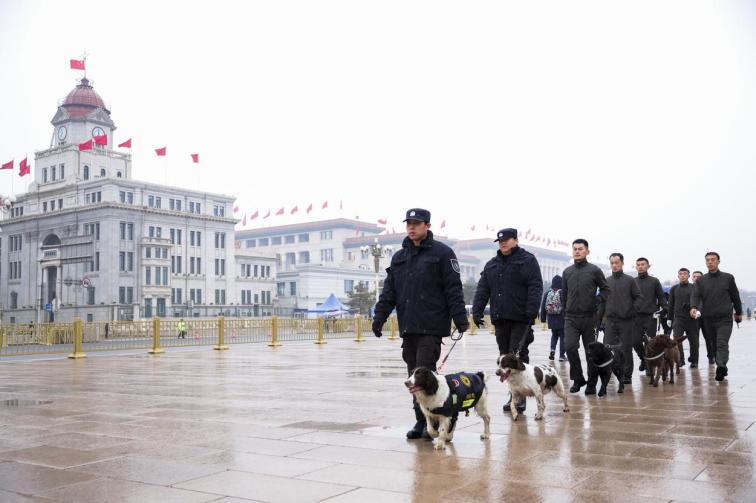In 2012, the CCP proposed: “Delaying retirement is good—support your own old age yourself.” (Screenshot from the internet)
[People News] The heavy club of mandatory social security contributions is finally about to come crashing down.
On August 1, the Supreme People’s Court held a press conference to release the Interpretation (II) on the Application of Law in Handling Labour Dispute Cases. It declared that regardless of whether both sides agree or whether the worker makes a unilateral promise, any arrangement of “not paying social security” is invalid. The interpretation will take effect on September 1.
This announcement sent shockwaves online. The authorities swear up and down that this is to protect workers’ rights, but ordinary people don’t see it that way. For netizens, the only certainty is that the government keeps cutting leeks; everything else is uncertain.
1. Uncertainty about Contribution Periods. In 1998, the minimum pension contribution period was 10 years to qualify. In 2011, the age was raised to 15 years. In 2024, the age limit was raised to 20 years.
2. Uncertainty about Where the Money Goes. Social security is divided into pooled accounts and personal accounts. You can check your personal account, but not the pooled account. Where does that pooled money go? Who uses it? Was it lost or profited? There’s no record. It’s a pure black ledger, and the government never discloses it. In July 2025, the National Audit Office revealed: in 13 provinces, 40.626 billion RMB of pension funds were illegally diverted to pay local government debts, a systemic violation. During the three years of the pandemic, governments everywhere diverted medical insurance funds to buy vaccines—no one knows how much was embezzled along the way. And of course, there was the infamous Shanghai Chen Liangyu social security corruption case.
3. Uncertainty about Receiving Pensions After Retirement. China’s social security operates on a pay-as-you-go model: today’s workers fund today’s retirees. But with more retirees and fewer new workers, the gap grows. From 2022 to 2036, China will face a 15-year retirement wave: Each year, over 20 million elderly will retire. Over 15 years, the labour force will shrink by 147 million, or an average decrease of 10 million workers per year. The number of retirees will grow at nearly twice the rate of new workers.
In other words, the number of people collecting benefits keeps increasing, while the number of people paying in keeps shrinking. More money is going out, less is coming in, and the end result is that the pension shortfall is growing larger and larger. In 2019, the Chinese Academy of Social Sciences’ World Social Security Research Centre released a report titled China Pension Actuarial Report 2019–2050. The conclusion was that by 2027, the cumulative balance of pension funds would reach its peak, and every year thereafter, expenditures would exceed income. By 2035, the cumulative balance of the urban employee basic pension insurance fund would be completely depleted—meaning that by then, there may be no pensions left to pay.
4. Uncertainty about Getting Back What You Paid In. The new rule sets the retirement age at 63. If you start paying at age 24, you’ll contribute for 39 years. To get back what you paid, you’d need to live to 102. But China’s average life expectancy is under 80. Most people will never see a full return of their contributions.
The “Three Highs” of CCP Social Security
1. High Contribution Rates. China’s five insurances: Pension: employer 16–20%, employee 8%; Health: employer 6–10%, employee 2%; Unemployment: employer 0.5–2%, employee 0.5–1%; Work injury: employer 0.5–1.5%; Maternity: employer 0.5–1%. Total: 30–40% of wages.
In European and American countries, the contribution rates are much lower. For example, United States, Social Security tax totals 12.4% (6.2% each from employer and employee), Medicare tax totals 2.9% (1.45% each from employer and employee), for a combined 15.3%. United Kingdom: National insurance contribution rate is 12%. France: Social security contribution rate is 22%. Brazil: Pension contribution rate is 19% (8% employer + 11% employee).
2. The contribution base is high. Take the 2024 social security contribution bases for urban employees across China’s provinces as an example: Beijing minimum: 6,821 RMB. Shanghai minimum: 7,384 RMB. Jiangsu (non-private sector): 10,425 RMB. Zhejiang (non-private sector): 11,087 RMB. Guangdong (non-private sector): 11,283 RMB. What does this mean? Let’s take Beijing as an example. The 2024 minimum wage in Beijing is 2,420 RMB per month. If you are unlucky enough to earn only 2,420 RMB, your social security is not calculated based on 2,420 RMB, but instead on the minimum base of 6,821 RMB. Some people say: “Isn’t that a good thing? Paying more now means getting more later!” That’s the naïve wishful thinking of leeks who don’t know the truth. As already mentioned, whether you’ll even get your pension after retirement is another matter. What you’re paying now is being used to fund today’s uncles and aunties dancing in the public squares. No wonder a netizen, after filming retirees square dancing on the way home from work, sighed: “On my way home, I saw my social security payments dancing—so sad.”
3. Huge disparities in retirement benefits among different groups. This is what the public criticises most. The pensions of farmers, enterprise employees, and government/ public institution staff are worlds apart. For example, in 2023, Chengwu County in Shandong Province published its pension distribution data: Government employees: 7,452 RMB/month (average). Enterprise employees: 2,326 RMB/month (average). Urban and rural residents: 175 RMB/month (average). And this is just a small county. When it comes to special medical treatment, the healthcare resources consumed by retired senior CCP officials remain a black hole. Even the money used for killing living people to harvest organs comes from the pooled medical insurance funds contributed by ordinary workers. Meanwhile, retired senior officials still enjoy special medical privileges. Even organ transplants funded by insurance are effectively paid from workers’ pooled funds.
One analysis of 2022 data showed: about 6 million people receive pensions of 10,000 RMB/month—mostly officials and state-sector employees.
In May 2025, an article titled “Every Extra Day Grandpa Lives Brings 566 Yuan of Income to the Family” spread widely online. The article said that the 89-year-old grandfather, a former technical backbone at China Railway Construction Group, receives a monthly pension of 17,000 yuan—equivalent to three months’ wages for an ordinary local worker—and has become the family’s main breadwinner. As a result, his son, grandson, and daughter-in-law all take turns serving him, treating and caring for the old man as the family’s top priority.
Some netizens commented that the new compulsory social insurance regulation taking effect on September 1 has a fundamental problem of unfairness, reflecting a deeper crisis of government credibility in China—what is known as the Tacitus Trap in social science. The so-called five insurances and one housing fund are not really “insurance,” but simply another form of “tax.” Don’t expect to gain benefits from the authorities—“for every grain of rice you eat from them, they’ll make you spit out a whole bowl of food.” In August, some netizens reported that in many regions, parents were being forced to pay social insurance; otherwise, their children would be barred from attending school. If the payments were not made, the children would be immediately expelled.
Why is the CCP pushing so hard? Because both the fiscal budget and social security funds are in the red.
Public data show that by the end of 2024, the number of people enrolled in basic pension insurance nationwide was 1.073 billion; in basic medical insurance, 1.326 billion; in unemployment, work injury, and maternity insurance, 246 million, 304 million, and 253 million, respectively. Based on the lowest figure (unemployment insurance), the number of people covered by the full package of “five insurances” nationwide is only about 250 million.
Now let’s look at the revenue and expenditure of the social security fund. In 2024, nationwide social insurance fund revenue was 11.89 trillion yuan, expenditure was 10.61 trillion yuan, with a surplus of 1.28 trillion yuan for the year. Although there was still a surplus, within the 11.89 trillion in revenue, government subsidies at various levels amounted to 2.69 trillion yuan, up 10.7% year-on-year—a pressure that speaks for itself. Pension insurance is the main source of this strain. According to the Ministry of Finance’s Report on the Implementation of the 2024 Central and Local Budgets and the Draft Central and Local Budgets for 2025, the 10.7% increase in fiscal subsidies in 2024 was mainly due to “increased subsidies from all levels of government for basic pension insurance and related items.”
With both fiscal accounts and social security fund accounts running deficits, the CCP has become desperate, and thus, the rollout of mandatory nationwide social insurance. But netizens aren’t buying it. The comment sections have “flipped over”: “Hungry Flourishing Age Fift [Shanghai]1”: “Good things ever fall on the heads of oxen and horses (ordinary people)?”
Mars Netizen: “The pool has no water left, so they can only use this method to fill the hole. It’s not that I need social security—it’s social security that needs me.” Mars Netizen 2: “If you all don’t pay, where will the tens of thousands per month in pensions come from for others?” “Pay social security, save Lanlan.”
Some netizens pointed out sharply that compulsory social insurance is nothing but drinking poison to quench thirst. For ordinary people at the bottom of society inside China, it’s as if the sky has collapsed. The disaster of forced social security contributions has already triggered a new wave of wage cuts, layoffs, and unemployment. A security guard at a property company in Tianjin reported that, in order to comply with mandatory social insurance payments, his wages were slashed from 3,500 yuan to 2,000 yuan—a cut of over 40%! Restaurants like McDonald’s and Xiaoyang Shengjian have even started hiring retirees aged 50–60, requiring them to present retirement certificates.
Netizens commented: The CCP chose compulsory social insurance instead of compulsory two-day weekends or compulsory eight-hour workdays; it chose a blunder instead of a major or bold policy.
In fact, in recent years, in order to maintain the pension benefits of cadres inside the system, the CCP has tried every trick: fiscal subsidies, state-owned enterprise subsidies, delaying retirement, raising the contribution base, and even the so-called “south-to-north transfer” of pension funds. In 2023, a total of 18 provinces nationwide paid into the central pension pool, but only 4 provinces contributed more than 10 billion yuan. Guangdong alone contributed 115.8 billion yuan—more than the combined total of all other provinces. In other words, the social security contributions of the people of Guangdong not only have to support their own province’s retired officials, but also those of officials across the country.
Even so, the hole in social security only grows larger by the day. By September 1, the regime had no choice but to roll out a nationwide “slaughter-the-pigs” scheme. What’s more, CCP “experts” have even brazenly suggested that the government should start requiring people to contribute to pensions from the age of 10—an act netizens condemned as utterly shameless.
One netizen mocked the CCP, saying: “A weasel stole 400 eggs, but instead of catching the weasel, you force the hens to lay eggs every day to make up for the loss. Are you a human, or a weasel?!”
(First published by People News)











News magazine bootstrap themes!
I like this themes, fast loading and look profesional
Thank you Carlos!
You're welcome!
Please support me with give positive rating!
Yes Sure!